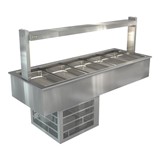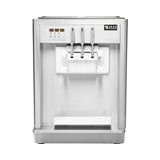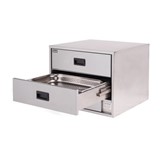Want staff who can boost sales without sounding salesy? Discover proven coaching strategies to help your team upsell with confidence and care.
Key takeaways
- Upselling works: Smart upselling can lift average order values by 10-30% without impacting customer satisfaction.
- Confidence, not pressure: Staff need to feel comfortable and confident in making suggestions, not rehearsed or pushy.
- Know your menu and margins: Upselling should prioritise high-margin or feature items that genuinely enhance the dining experience.
- Training is essential: Ongoing coaching, role-play, and clear scripts are key to building upselling skills across teams.
- Customer cues matter: Effective upselling relies on reading guest behaviour and tailoring the offer accordingly.
Introduction: Why upselling matters now more than ever
With operating costs rising and margins tightening across Australia’s hospitality sector, smart upselling is no longer optional, it’s essential. According to Deloitte’s 2023 Australian Restaurant Outlook, foodservice businesses face a 15% increase in input costs year-on-year, while wages and rent continue to climb. In this climate, teaching your staff to upsell with confidence, without sounding pushy, can directly support profitability without increasing foot traffic.
But let’s be clear: no one wants to feel like they’re being sold to when they sit down for a meal or coffee. The key lies in subtlety, timing, and genuine enthusiasm.
In this article, we’ll unpack how to coach your front-of-house team to upsell effectively while still creating an enjoyable, authentic experience for your guests.
Understanding the psychology of upselling
Before training begins, it’s critical to understand how customers respond to suggestions. Upselling done well doesn’t feel like a sales pitch, it feels like a thoughtful recommendation.
- Framing is everything: According to a 2022 CGA Australia consumer survey, diners are 68% more likely to say yes when a staff member phrases the offer as a benefit to the experience, e.g. “Would you like to pair that with a glass of our house pinot? It really complements the flavours.”
- Avoid choice overload: The more options offered, the more likely the customer is to say no. Focus on one to two suggestions, tailored to the moment.
- Social proof helps: Mentioning popular items (“This is one of our bestsellers”) increases conversions without pressure.
Tailoring upselling strategies to different business types
Upselling looks different depending on your venue type:
- Cafés: Focus on add-ons like syrups, alternative milks, protein boosts, or snacks at point-of-sale.
- Casual dining: Promote sides, drinks, and desserts as an extension of the main meal.
- Fine dining: Use storytelling, highlight provenance, wine pairings, or seasonal upgrades.
- QSRs (quick service restaurants): Leverage tech like self-ordering kiosks with visual prompts to upsell add-ons or meal deals.
Real-world example: Sydney-based café chain Pablo & Rusty’s trains baristas to suggest “a cheeky snack on the side” while waiting for coffee, resulting in a 22% uplift in pastry sales during peak hours.
Popular items and food to upsell: What actually works
Knowing what to upsell is just as important as how. Focus your team's efforts on high-margin, high-appeal items that enhance the guest experience without seeming indulgent or unnecessary. Here's what consistently works across hospitality venues in Australia:
- Drinks:
- Alcoholic pairings: Wine, craft beer, or cocktail suggestions tailored to the main meal (e.g. “Would you like to try our house red with that steak?”).
- Premium non-alcoholic options: Kombucha, cold-pressed juices, mocktails, often have higher margins than soft drinks.
- Coffee upgrades: Extra shot, alternative milks, flavoured syrups, or a large size boost average spend with little friction.
- Entrees and sides:
- Shareable starters: Garlic bread, dips, or seasonal appetisers are low-labour and easy to pitch to groups.
- Premium sides: Swap standard chips for truffle fries, add a small salad, or suggest loaded options for a few dollars more.
- Toppers: Add-ons like grilled halloumi, avocado, or bacon to a dish are high-margin and perceived as value adds.
- Desserts:
- Feature desserts: Position one to two seasonal options as must-try items with strong visual appeal.
- Coffee + dessert bundles: Pitch as a “sweet finish” to the meal; especially effective at lunch.
- Sharing desserts: Platters or sundaes pitched to families or groups increase overall ticket value.
- Meal upgrades:
- Combo deals: Add chips and a drink for a small additional charge. This works especially well in QSR and casual venues.
- Upsized portions: Offer large over regular when the price gap is low, particularly for fries, mains, or smoothies.
- Premium proteins: Swap out chicken for prawns or steak for a few dollars more.
- Retail or takeaway add-ons:
- Housemade items: Granola, sauces, or baked goods for takeaway.
- Branded items: Coffee beans, merch, or wine bottles for home enjoyment.
Designing an effective upselling training program
You can’t expect staff to upsell well without support. Build it into onboarding and ongoing team development:
- Product knowledge: Staff should taste the menu and understand which items have the highest margins and customer appeal.
- Role-play: Regular scenario-based training improves confidence and normalises upselling behaviour.
- Language frameworks: Provide soft, non-pushy scripts like:
- “Many guests love pairing this with...”
- “Would you like to make that a meal for just $4 more?”
- “Have you tried our seasonal dessert? It’s a favourite right now.”
- Measure and reward: Use POS data to track upsell success by individual or shift. Recognise wins through incentives or shout-outs.
Coaching staff to read cues and personalise the approach
Not every customer wants to be upsold to, and that’s okay. Teach your team to read subtle cues:
- Body language: Engaged customers who ask questions or make eye contact are more receptive.
- Timing: Offer before the customer has made up their mind, not after they’ve already declined extras.
- Group dynamics: With couples or families, suggest group-style upgrades or shared sides.
Scenario: A solo diner reading a book likely won’t want the same level of engagement as a celebratory table of six. Train staff to match energy and enthusiasm appropriately.
Upselling without compromising service quality
The goal is to elevate, not disrupt, the guest experience. Avoid overloading your team with upsell targets that feel transactional.
- Keep it conversational: Avoid scripted monologues. Encourage staff to weave suggestions naturally into their service style.
- Back it up with service: A warm smile, fast delivery, and attentive care are what make suggestions feel welcome, not invasive.
- Don’t push after a no: Once declined, move on graciously. Pressure undermines the trust needed for return visits.
Using tech tools to support upselling without losing the human touch
Technology can complement staff efforts, especially for consistent execution.
- POS prompts: Tools like Kounta or Lightspeed offer smart prompts for upgrades or extras at checkout.
- Digital menus: QR-code menus let venues visually promote specials or add-ons in a low-pressure way.
- Loyalty platforms: Use systems like me&u or Mr Yum to suggest relevant offers based on customer history.
Example: Melbourne’s Higher Ground café uses Mr Yum to dynamically promote seasonal drinks during winter, increasing average ticket spend by 17% without additional staff pressure.
Tracking performance: KPIs for upselling success
Measuring upselling effectiveness is key to improving results and coaching impact. Tracking the right KPIs helps you see what’s working and where to focus efforts, boosting revenue without pressuring guests.
Key KPIs to track
- Average spend per head
- Shows if upselling is increasing customer spend. A 10–30% lift is achievable with good coaching.
- Add-on attach rate
- The percentage of orders including extras like drinks, sides, or desserts.
- Dessert and beverage conversion rates
- Measures success pitching these high-margin items.
- Staff or shift upsell performance
- Identifies top performers and training needs.
- Repeat visit impact
- Use loyalty data or surveys to link personalised upselling to return visits.
Setting realistic targets
Use your venue’s sales data as a baseline. Set achievable goals, like a 5% increase in dessert attach rate over three months, to motivate your team.
Australian tools to monitor KPIs
- Kounta by Lightspeed
- Square for Restaurants
- Revel Systems
These POS systems offer built-in sales and staff performance reports, making it easy to track upselling success.
Conclusion: Create a culture of genuine recommendation
At its heart, upselling is simply about sharing what you love. When your team feels confident in the product and supported in their approach, guests respond positively.
Coaching staff on upselling isn’t a one-off training, it’s a mindset shift. By embedding these principles into your culture, you’ll not only grow revenue, but also enhance your overall service experience.


-160x160-state_article-rel-cat.png)
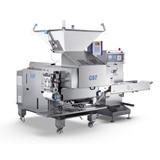


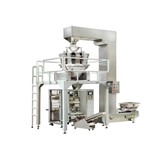
-160x160-state_article-rel-cat.png)



-160x160-state_article-rel-cat.png)
